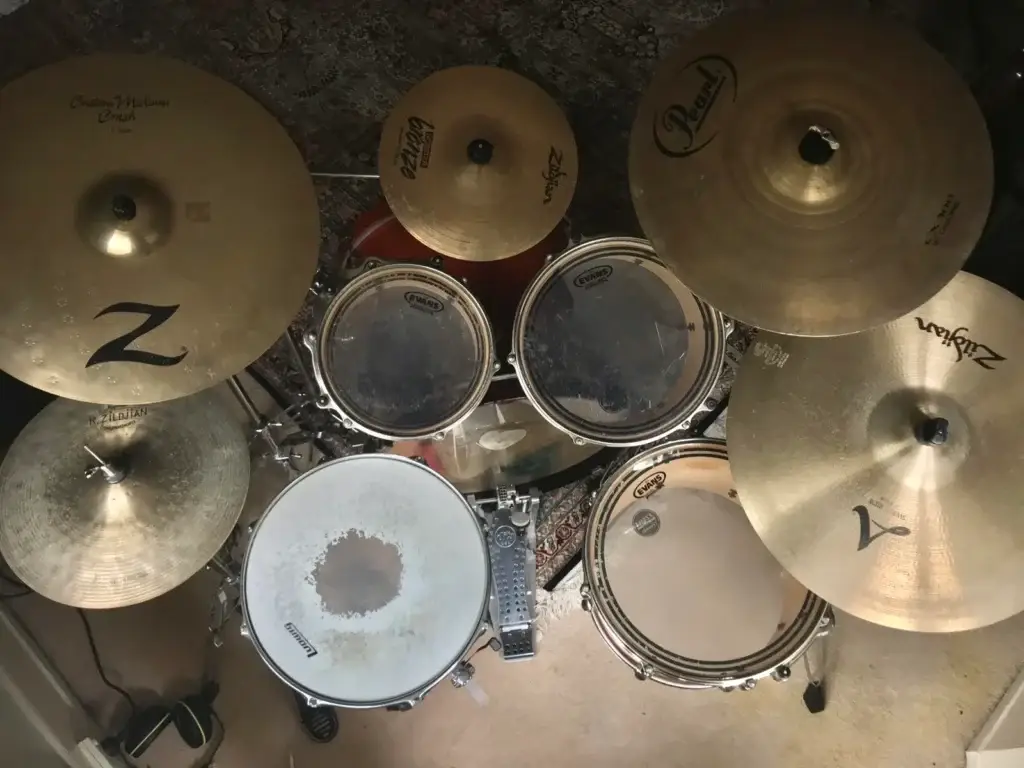Introduction t0 Scimitar Drum
The scimitar drum, an extraordinary and ancient percussion instrument, stands out not only for its unique design but also for its rich historical and cultural significance. This article delves into the origins, construction, and musical impact of the cymbal, offering insights into its enduring legacy. From its historical roots to modern-day revival, the scimitar drum continues to captivate musicians and enthusiasts alike.
The Origins of the Scimitar Drum
The history of the scimitar drum is as captivating as the instrument itself. Originating from ancient civilizations, this drum has been a vital part of cultural ceremonies and musical traditions for centuries. Its name, derived from the scimitar sword, hints at the drum’s distinctive curved shape, which sets it apart from other percussion instruments. Various historical records and archaeological findings suggest that the cymbal was used in religious rituals, royal events, and traditional festivities, highlighting its integral role in ancient societies.
Construction and Design
The construction of the scimitar drum is a testament to the craftsmanship and artistry of ancient instrument makers. Typically made from durable wood, animal skins, and metal components, each scimitar drum is a unique piece of art. The process of creating a cymbal involves intricate carving, precise assembly, and meticulous tuning to achieve the desired sound quality. The curved body of the drum, reminiscent of a scimitar sword, not only adds to its visual appeal but also influences the acoustics, producing a rich and resonant sound.
Unique Features of the Scimitar Drum
What truly sets the scimitar drum apart are its unique features. The drum’s curved shape allows for a distinctive range of sounds, from deep, resonant bass tones to sharp, high-pitched notes. This versatility makes the cymbal a valuable addition to any musical ensemble. The combination of different materials, such as wood and metal, further enhances its acoustic properties, allowing for a wide array of rhythmic patterns and tonal variations.
The Scimitar Drum in Ancient Music
In ancient music, the scimitar drum played a pivotal role in various cultural and ceremonial contexts. Its unique sound and design made it a favored instrument in royal courts, religious rituals, and traditional celebrations. The drum’s ability to produce a broad spectrum of sounds made it suitable for both solemn and festive occasions, reflecting the diverse musical traditions of ancient civilizations. Over time, the cymbal has been integrated into modern compositions, demonstrating its timeless appeal and adaptability.
Comparisons with Other Percussion Instruments
When compared to other percussion instruments, the scimitar drum stands out for its distinctive shape and sound. While it shares similarities with other hand drums, such as the djembe or conga, the scimitar drum’s curved design and construction materials give it a unique tonal quality. Its influence can also be seen in the design of other traditional instruments, highlighting its impact on the evolution of percussion music.
Playing Techniques
Mastering the cymbal involves a combination of basic and advanced playing techniques. Beginners typically start with simple hand strikes and rhythms, gradually progressing to more complex patterns and styles. Advanced players often incorporate finger rolls, slaps, and dynamic variations to create intricate and expressive performances. The curved shape of the drum requires a unique approach to playing, allowing for a diverse range of sounds and rhythms.
Famous Scimitar Drum Players
Throughout history, many musicians have been celebrated for their skillful playing of the scimitar drum. Historical records mention renowned drummers who played pivotal roles in royal courts and religious ceremonies. In contemporary times, a resurgence of interest in traditional instruments has brought new attention to the cymbal, with modern musicians exploring its potential in various musical genres. These players have contributed to the preservation and revival of this ancient instrument, ensuring its legacy continues to inspire future generations.
The Scimitar Drum in Art and Culture
The scimitar drum’s influence extends beyond music, finding representation in art and culture. Depictions of the drum in ancient artwork and sculptures highlight its significance in historical societies. Additionally, the cymbal has been featured in literature and folklore, often symbolizing strength, unity, and cultural heritage. Its iconic shape and sound continue to inspire artists and storytellers, reflecting its enduring impact on human creativity.
Preservation and Revival
Efforts to preserve and revive the cymbal are crucial in maintaining its historical and cultural significance. Cultural organizations and musicians actively research and document the scimitar drum’s history, while also promoting its use in contemporary music. Workshops, festivals, and educational programs aim to introduce new generations to the cymbal, fostering an appreciation for its unique qualities and rich heritage. These initiatives ensure that the scimitar drum remains a vibrant and integral part of the global musical landscape.
Conclusion
In conclusion, the scimitar drum is a remarkable instrument that bridges the past and present, offering a unique blend of history, craftsmanship, and musical versatility. Its distinctive shape, rich sound, and cultural significance make it a treasured part of our musical heritage. By exploring its origins, construction, and impact, we gain a deeper appreciation for the cymbal and its enduring legacy. As efforts to preserve and revive this ancient instrument continue, the scimitar drum will undoubtedly inspire and captivate musicians and audiences for generations to come.
Also Read: Fapello: The Future of Video Sharing Platforms
FAQs
What is the scimitar drum?
Known for its distinctive curved shape resembling a scimitar sword, the scimitar drum is an ancient percussion instrument. Throughout history, various cultures and ceremonies have utilized the cymbal.
what is the Construction of the scimitar drum?
The construction process involves intricate carving, precise assembly, and meticulous tuning to achieve the desired sound quality.
What makes the scimitar drum unique?
The scimitar drum’s unique features include its curved shape, which allows for a distinctive range of sounds. Its combination of different materials, such as wood and metal, which enhance its acoustic properties.
How is the scimitar drum played?
vhikkjkjuiPlaying the scimitar drum involves a combination of basic and advanced techniques, including hand strikes, finger rolls, and dynamic variations. The curved shape of the drum requires a unique approach to playing, allowing for a diverse range of sounds and rhythms.
Who are some famous scimitar drum players?
Throughout history, many musicians have been celebrated for their skillful playing of the scimitar drum. In contemporary times, modern musicians are exploring the drum’s potential in various musical genres, contributing to its preservation and revival.
Why is the scimitar drum important in art and culture?
Ancient artwork and sculptures depicted the cymbal, highlighting its significance in historical societies. Literature and folklore featured the scimitar drum, often symbolizing strength, unity, and cultural heritage.












